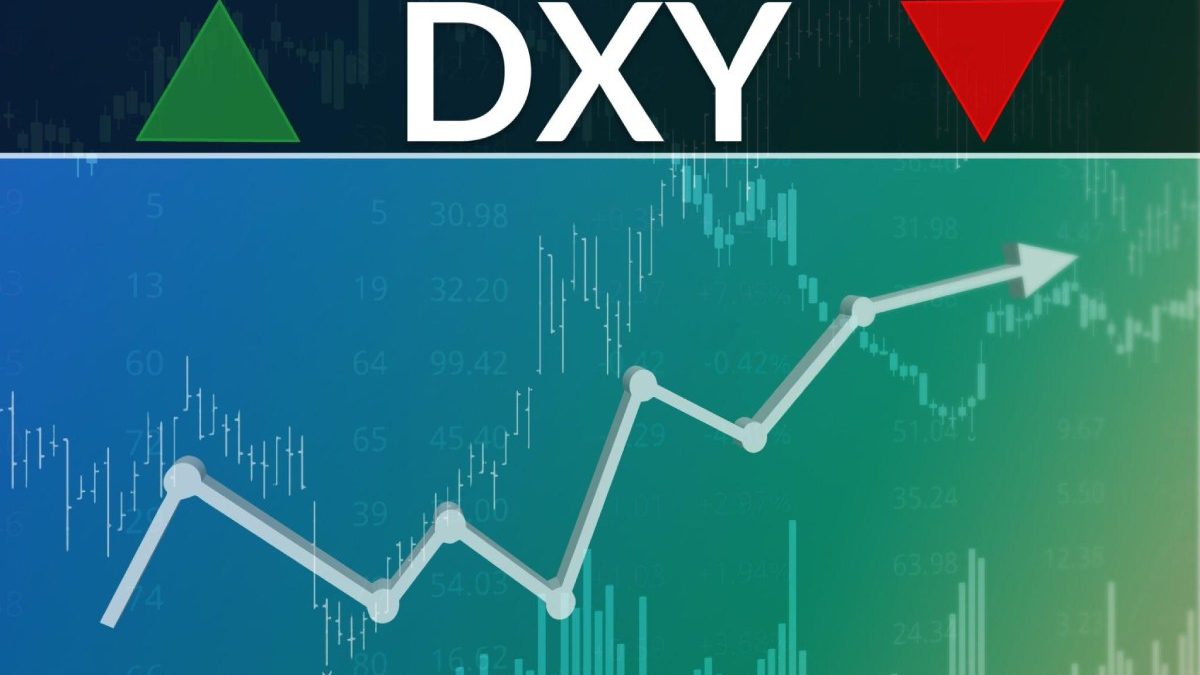The US Dollar Index, more widely known as the DXY Chart, offers a detailed lens into the world’s financial framework. For professionals looking to make their mark in the global business landscape, understanding the nuances of the DXY Chart is crucial. Delving into its core components and the subsequent ripple effects on global economics is pivotal.
Table of Contents
DXY Explained
The DXY Chart represents the valuation of the US dollar against a collective of six pivotal global currencies. These comprise the Euro, Japanese Yen, British Pound, Canadian Dollar, Swedish Krona, and Swiss Franc. This index offers a comprehensive perspective on the international standing of the US dollar, reflecting its relative strength or potential vulnerability.
Given the major economies these currencies represent, fluctuations in the DXY provide keen insights into global economic shifts. For instance, geopolitical tensions or breakthrough trade agreements can cause palpable shifts in the index, echoing the intertwined nature of global economies.
Global Business Implications
- Investment Landscapes: An ascending DXY typically denotes a vibrant US economy, rendering US-based assets more enticing to global investors. However, on the flip side, a declining DXY might make foreign markets more attractive, steering investors towards opportunities beyond American shores.
- Trade Dynamics Revisited: A dominant DXY may elevate the cost of US exports, making them less competitive on the global stage. This could compel international businesses to reorient their sourcing strategies, turning to more cost-effective markets for their needs.
- Emerging Market Dynamics: Emerging economies, particularly those burdened with dollar-denominated obligations, often face heightened repayment challenges during periods of a potent DXY. Such scenarios can instigate capital flight from these markets, compelling businesses to reevaluate their international investment blueprints.
DXY’s Impact on Commodities
With commodities predominantly priced in dollars, a surging DXY naturally elevates their cost for international purchasers. For instance, a robust DXY might make crude oil more costly for countries outside the US, potentially leading to decreased demand and subsequent shifts in global energy strategies.
The Gold Nuance
Gold, often viewed as a hedge against economic volatility, also feels the ripple effects of DXY movements. A strengthened dollar can diminish global gold demand, as it becomes pricier for international buyers, potentially affecting gold-backed financial instruments and investments.
Currency Arbitrage and Forex Markets
The ebbs and flows of the DXY are inextricably linked to the vast world of Forex trading. Recognizing potential trends in the DXY can pave the way for profitable currency pair strategies. For instance, a declining DXY might suggest strengthening opportunities in other major currencies, presenting arbitrage opportunities for discerning traders.
Forex Strategy Realignment
For Forex enthusiasts, a thorough comprehension of the DXY’s trajectory is non-negotiable. It influences decision-making, from short-term trading strategies to long-term investment horizons, acting as a litmus test for global currency health.
Market Sentiment and Consumer Behavior
A potent DXY often signals robust purchasing power for US consumers. However, the inverse can be observed internationally. As the dollar strengthens, overseas consumers might experience reduced buying power, influencing global travel, luxury acquisitions, and even everyday commodity demand.
Consumer Confidence Metrics
Consumer confidence, often a barometer of economic health, can be indirectly influenced by the DXY. As businesses grapple with the repercussions of a volatile dollar, consumers too might reassess their expenditure patterns, potentially stalling or spurring economic momentum in various regions.
Broadening Your Financial Lens
The DXY Chart is a pivotal tool in international finance, but it’s just a piece of the larger puzzle. For a more comprehensive view, businesses should integrate the DXY insights with other crucial financial indicators. Merging the DXY’s data with regional economic indicators and sector-specific trends will create a richer, more informed strategy.
The ever-evolving nature of markets demands adaptability. By merging diverse financial data and staying agile, professionals can better position themselves for success in the fluctuating global economy.

